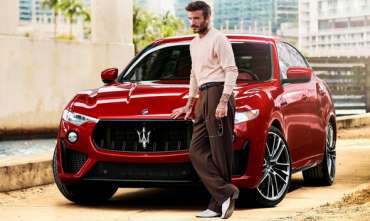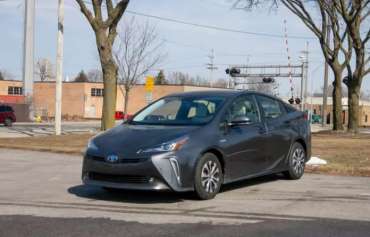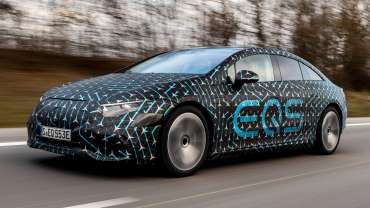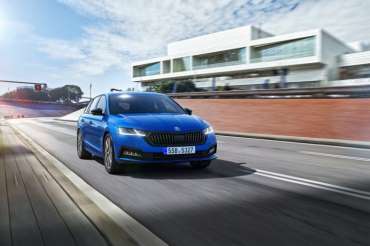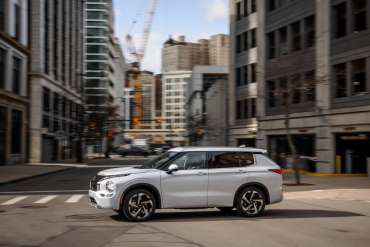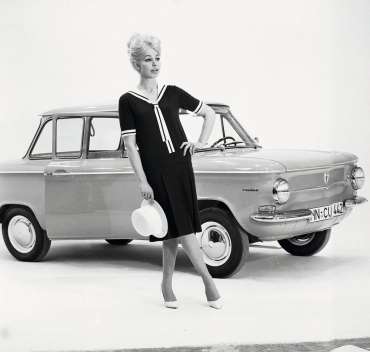
Worldcarblog.com
David Beckham is the new brand ambassador of Maserati
Thanks to the recent debut of the MC20 supercar, Maserati is once again attracting attention, and the new brand ambassador will definitely help in that.
In addition to the MC20 supercar, Maserati is also preparing to present its new crossover called Grecale, which will be sold with the Levante model. The company has to sell more cars in order to survive, and the new brand ambassador will try to help it in that.
He is a former football star, a player of Manchester United, Real Madrid, Milan, Los Angeles Galaxy and PSG, the phenomenal Englishman David Beckham (David Beckham). Beckham is known as a car lover and has owned several fantastic cars including the Aston Martin V8 Volante, McLaren 720S, Porsche 911 Turbo Cabriolet and others.
Maserati says Beckham will "bring the brand forward to the forefront of luxury cars in the 21st century" as the company prepares to enter a new electric era.
"The brand is moving forward. Maserati is innovative by nature, driven by passion and has a unique design. The partnership with David is the embodiment of those values," said Pase Tubito, head of marketing at Maserati.
"This is an exciting time for me to start a partnership with Maserati, a legendary Italian brand that shares my passion and respect for innovation and design. I look forward to working together at this important time in their history and continuing their work globally," he said. Beckham.
Maserati has not revealed details about the partnership, but Beckham will definitely appear in promotional clips and when launching new models. The first video, already released, marks the beginning of a partnership, and shows the popular Becks neglecting his busy schedule for a moment to have fun at the Maserati Levante Trofeo in Miami. The powerful 3.8-liter twin-turbo V8 engine that develops 590 hp and 730 Nm of torque allowed it to "ignite the tires", which cheered him up and caused a smile on his face.
Beckham really did everything himself during the filming of the promotional video under the supervision of professional drivers.
Toyota Prius Review: High Mileage, for a Price
The verdict: Sky-high fuel efficiency with front- or all-wheel drive remains the main draw for Toyota’s iconic Prius hybrid, even as the aging current generation grows less competitive in other ways.
Versus the competition: When Toyota unveiled this generation of the Prius more than five years ago, we lauded the car’s advancements in handling and interior quality. The intervening years, however, have seen rivals catch up on fuel efficiency and pull ahead in refinement and other technologies — though none yet offer all-wheel drive.
Toyota added the option of AWD to the Prius two model years ago, and it remains one of the most fuel-efficient cars of its type, at least before you look at plug-in vehicles. The AWD Prius comes in LE and XLE trim levels; we evaluated an XLE. The Prius can be had with front-wheel drive in five trims, including a limited-run 2020 Edition that commemorates two decades since the Prius debuted. (Heritage notwithstanding, it’s a baffling move; slapping “2020 Edition” on a 2021 model invites needless confusion, not to mention a constant reminder of a year everyone wants to forget.)
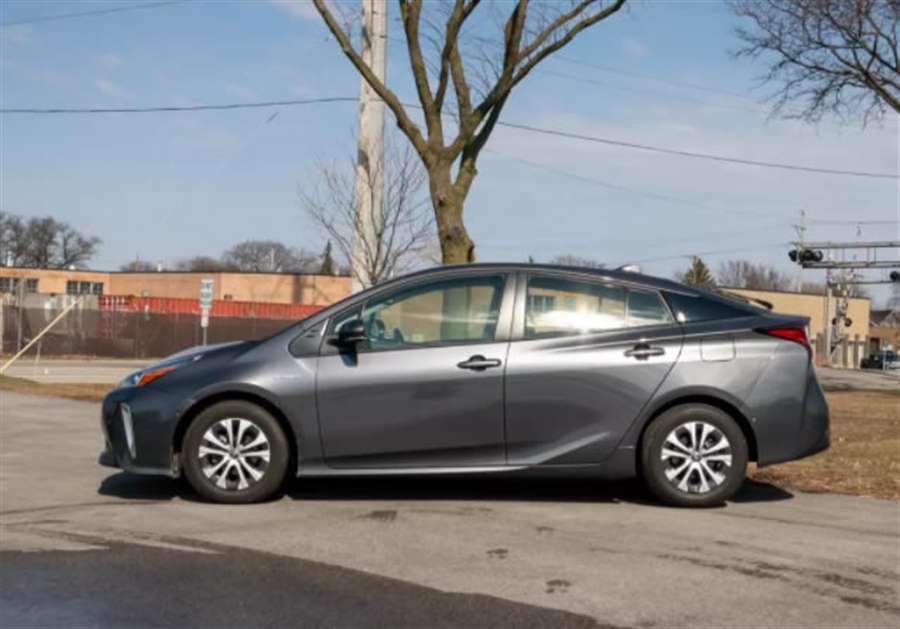
Besides the 2020 Edition, changes for 2021 include some augmented safety features and new Android Auto smartphone connectivity on most trim levels (Apple CarPlay remains standard). Stack up the 2020 and 2021 Prius or compare 2021 trim levels. Note, we separately cover the Prius Prime, a plug-in hybrid with an EPA-rated 25 miles of all-electric driving range on a full battery charge before the gas engine kicks in. (Here’s more about the main differences between a hybrid and plug-in hybrid.)
Gas Mileage: The Reason Anyone Buys a Prius
The Prius’ mileage leader is the L Eco, a base trim level that’s good for an EPA-estimated 56 mpg combined. Among plug-free cars, that rating trails only one rival: the Hyundai Ioniq Hybrid, whose base trim level, Ioniq Blue, gets an EPA-rated 59 mpg combined. That said, the L Eco trim accounts for less than 10% of Prius cars listed in Cars.com’s dealer inventory as of this writing. Most shoppers will end up with other trims of the Prius, which the EPA still rates a very good 52 mpg combined.
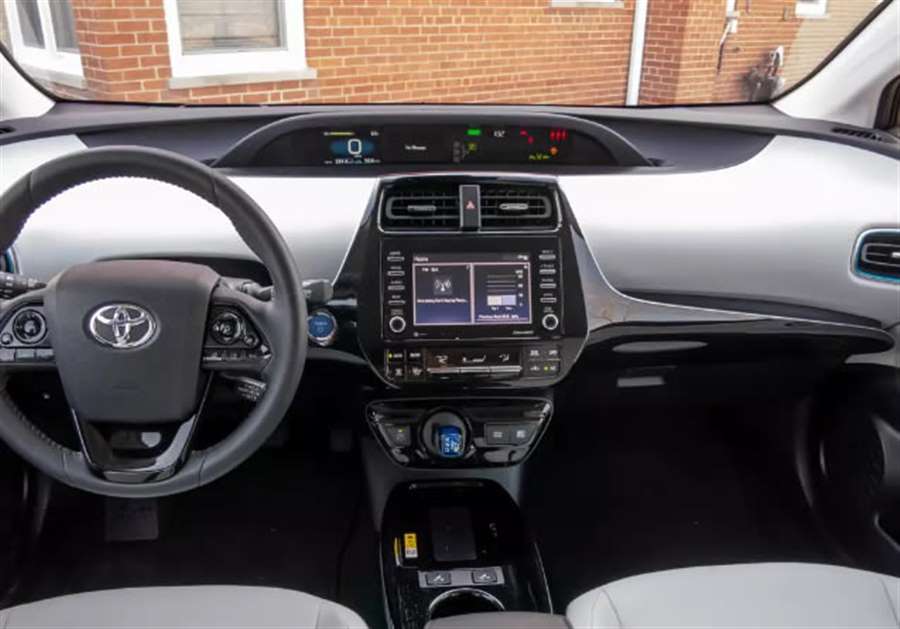
The Prius AWD, meanwhile, employs an additional electric motor at the rear axle, which powers the car continuously from a stop, then as-needed up to 43 mph. There’s no mechanical connection to the main powertrain, which pairs two electric motor-generators with a 1.8-liter four-cylinder engine. A power-split device with continuously variable properties doles out power to the wheels.
The whole of it makes for a combined 49 mpg in EPA ratings — short of the front-drive Prius but outstanding for an AWD vehicle that isn’t a plug-in. Our real-world testing returned results consistent with the car’s rating, with 46.6 mpg according to our calculations based on fill-up mileage ( 51.5 mpg on the trip computer) after 215 miles of mixed highway and suburban driving.
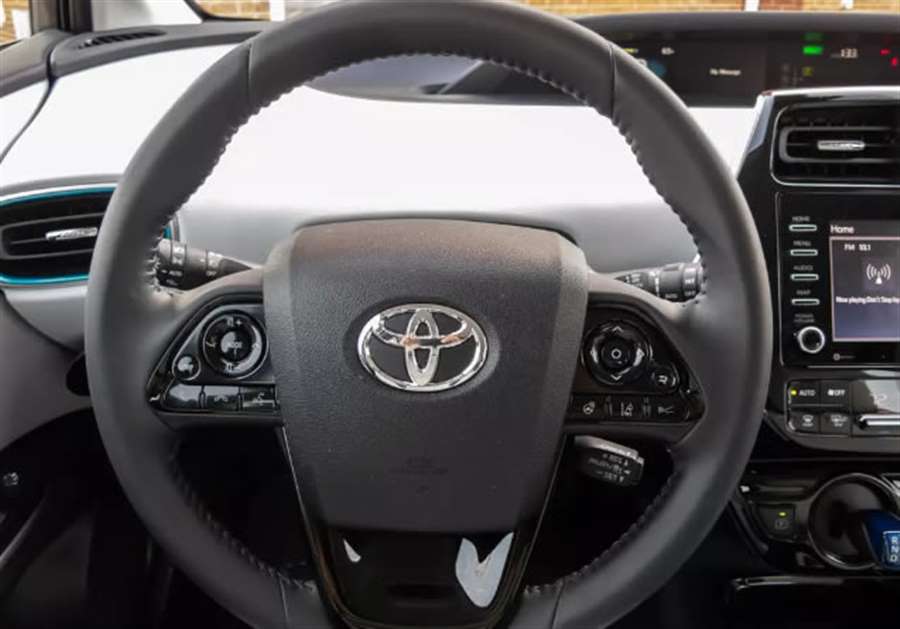
What You Give Up to Get There
As with most hybrids, electric operation alone is possible at low speeds under light acceleration, with the engine kicking in for anything beyond that. Under a combination of engine and electric power, the Prius has enough oomph; I needed most of the drivetrain’s reserves to claw my way up to 40 mph with 17 bags of mulch aboard — at least several hundred pounds — but power felt workably adequate.
That’s not to say the drivetrain is all that responsive. Press the accelerator while already in motion, and the Prius hesitates a beat or two before raising rpm to pull noisily ahead. Most modern CVTs implement quicker rpm transitions to mimic a step-gear downshift, but such programming usually trades fuel efficiency for responsiveness, so I seldom observe it with the CVT-style transmissions many hybrids use. The Prius, unsurprisingly, does none of that: Engine revs meander up or down in a slow, old-school fashion.
A few other downsides persist. Toyota’s regenerative brakes — a feature employed in all hybrids — impart a nonlinear pedal feel reminiscent of the technology’s early days. Response is tentative in the first inch or so of pedal travel, then becomes suddenly sharper as you press harder. So-called pedal linearity has improved among many hybrids over the years, even as a few non-hybrids introduce new forms of it.
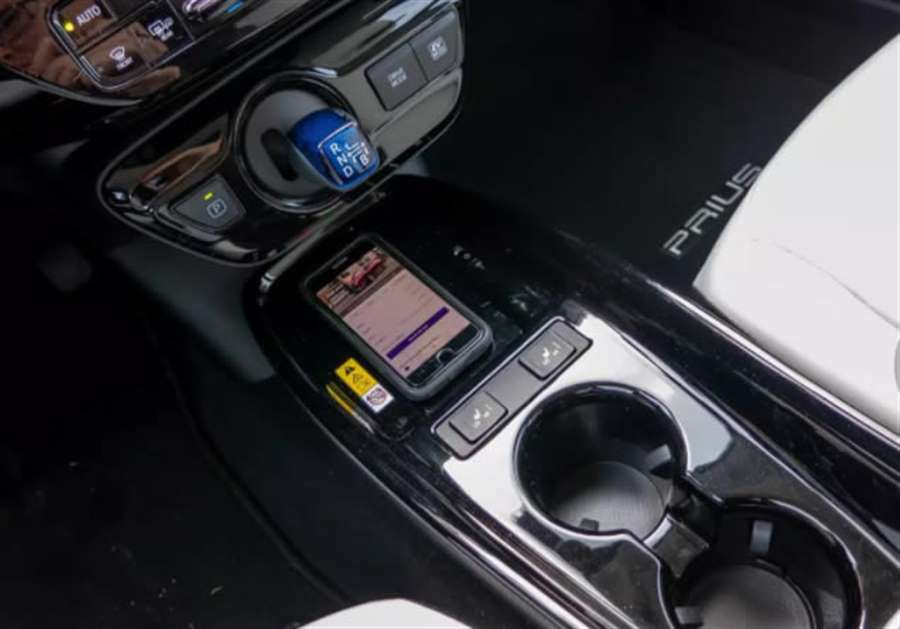
Ride quality and noise abatement also remain areas that could use improvement. At highway speeds, our test car’s efficiency-oriented Bridgestone Ecopia tires let out quite the howl, with adjacent trucks matching the ambient noise. The suspension sorts out minor bumps well enough, but anything significant sends turbulent aftershocks through the body. The Prius is not especially comfortable or quiet.
Is this the penalty for sky-high mileage at an affordable price? Maybe; the rival Honda Insight is no bank vault, either. Mass-market hybrids aren’t known for sophisticated suspensions or gobs of noise insulation, but some execute those things better than others. A redesigned Prius will probably improve on such aspects, and with the current Prius entering its sixth model year for 2021, time for a new version is nigh.
By contrast, the Prius’ hybridness has little bearing on its other deficiencies. Most trims get a touchscreen measuring just 7 inches diagonally — an inch short of what you’ll find in the base version of many mass-market cars — with modest screen resolution and undersized volume and tuning knobs. Apple CarPlay, Android Auto and Amazon Alexa integration are included with the 7-inch system, but they require a tethered connection as opposed to the wireless integrations that are expanding industrywide. Upgrade to the front-drive Prius Limited and you get the Prius Prime’s 11.6-inch vertically oriented touchscreen, but it confoundingly loses Android Auto connectivity. See our impressions of it otherwise.
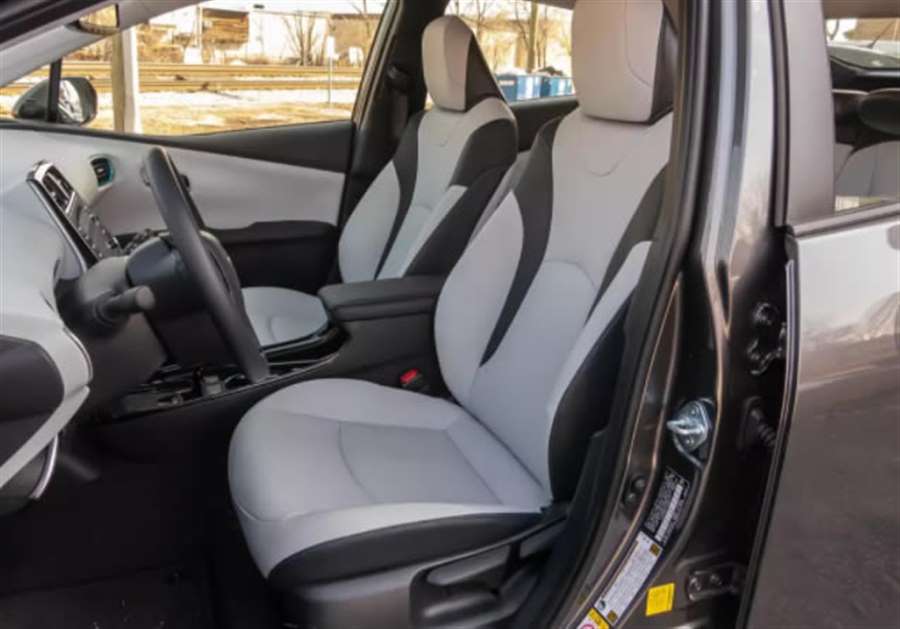
Where It Still Shines
An early example of Toyota’s well-executed TNGA platform, which now underpins many other cars, the Prius boasts improbably good handling. The steering has a touch of vagueness on-center, but it communicates lively feedback as you turn the wheel into corners. Body roll is nicely controlled, and the AWD model shows unexpected balance if you slide it around — something the Bridgestones easily allow.
Space efficiency, at least up front, is also among the Prius’ strengths. The low center console leaves good space for your knees and thighs, and all but the tallest drivers should find sufficient headroom, even with the seat elevated all the way. The backseat is a bit low to the floor, so adults may find their knees uncomfortably elevated, but we found sufficient clearance to fit bulky rear-facing child-safety seats behind a 5-foot-6-inch front passenger. (That’s not to say, however, that the Prius passed Cars.com’s Car Seat Check with flying colors; parents with young children should check out our full scoring.)
We measured 13.1 cubic feet behind the Prius’ backseat, a figure comparable to our audits for two other smallish hatchbacks, the Mazda3 (13.1 cubic feet) and Subaru Crosstrek (13.0 cubic feet). (Note that our independent accounting of cargo space differs from manufacturer specs, which we’ve found overrepresent hatch space, underreport trunk volume and are unreliable for comparison.)
The Prius earned top scores in most crash tests by the Insurance Institute for Highway Safety, but suboptimal results in the passenger-side small overlap front test kept the vehicle from garnering one of IIHS’ influential, if widespread, Top Safety Pick awards. Still, Toyota’s long list of safety and driver assist features is impressive: Automatic emergency braking with pedestrian detection, lane departure steering assist and automatic high-beam headlights are standard, as are adaptive cruise control and hands-on lane centering. Those last two features can both operate from a standstill all the way up to highway speeds. New for 2021 is the latest generation of Toyota Safety Sense, which adds more detection capabilities, and all but the base trim level get a blind spot warning system with rear cross-traffic alert. Top trims add curve-adaptive headlights.
Should You Buy a Prius?
The Prius starts around $25,500 for the cheapest front-drive trim. That’s roughly commensurate with Toyota’s immediate competition, and the base Prius doesn’t skimp on multimedia features or safety and driver-assist tech, as some rivals do. Optional AWD adds a modest $1,000-$1,400 to the Prius’ mid-level trims, depending on specifics; the cheapest AWD Prius lands comfortably under $30,000 (all prices include destination charges).
Ascending trim levels add items like faux-leather upholstery, heated front seats and a power driver’s seat. Oddly enough, you can’t get certain top-of-the-line features on any AWD model, and niceties like a memory driver’s seat, dual-zone climate control and genuine leather are unavailable on any 2021 Prius.
Loaded with factory options, the Prius tops out around $34,500. You should be able to find plenty of examples well below that, given about two-thirds of the new 2021 models listed on Cars.com are priced at or below $30,000. Still, budget-conscious shoppers might find wider affordability on the Insight, with 82% of its new 2021 models priced at or below $30,000 on Cars.com.
That said, the venerable Prius is bound to find plenty of shoppers. The current generation shows its age through its drivability and multimedia tech, but lower trim levels offer a good mix of value and efficiency — especially with AWD, a capability that hybrid shoppers would otherwise need an SUV to get.
Consequences of Brexit: The British in France are threatened with astronomical fines because they do not have a driver's license
The French government previously announced that the British living in that country will have to replace their British driver's license with a French one because of Brexit, but many of them did not do that, writes The Guardian. Some of them are now afraid that they will lose their jobs, others are afraid that they will have to return to Great Britain.
In the worst case, Britons living in France will have to take driving tests in France. In order to do that, they are obliged to attend classes and pass the theoretical exam in French. Obtaining a French driver's license costs around 1,800 euros, writes the HAK magazine.
When the Brexit option without an agreement appeared in 2018, about 100,000 Britons applied to exchange their British driver's license for a French one, but some of them did not. The French government announced late last year that the British in France would have to submit a request by December 31, 2021.
However, since January, the new French online licensing system has systematically rejected all requests, because there is (yet) no agreement between Great Britain and France in this area. It is currently estimated that there are around 3,000 Britons who are seriously concerned. Some of them do not have a valid driver's license because the old one has recently expired. If you are caught driving in France without a valid driver's license, the fine is up to 15,000 euros.
New Mercedes EQS prototype review
From behind the wheel, the late prototype version of the Mercedes EQS reveals the tech-packed EV’s quiet and refined character
Verdict
The Mercedes EQS is the kind of car where you don’t miss a combustion engine. It’s all about refinement, which it seriously delivers. It’s surprisingly agile given its size and weight, while performance is strong.
This is our first chance to sample the new Mercedes EQS – the company’s all-electric flagship – ahead of its world premiere, and from our experience of this late-stage prototype, the technology is certainly something impressive.
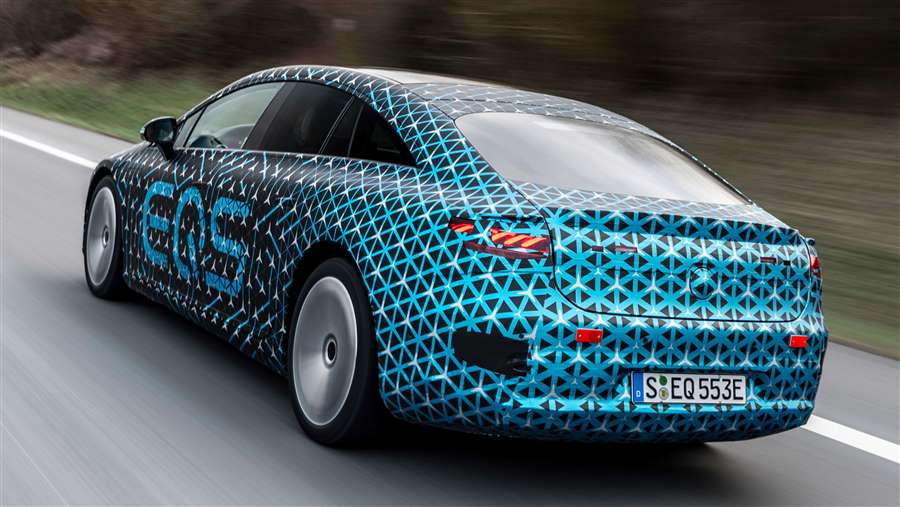
Mercedes recently revealed more EQS specifications, with an EQS 450+ and an EQS 580 4MATIC available from launch. It’s the latter we’re testing here, and with 516bhp and 855Nm of torque, even for a 2.5-tonne car the EQS pulls powerfully and smoothly. The thrust on offer is considerable, but it’s superbly relaxing.
Electric cars with the longest range
That’s thanks to the incredible refinement the car offers. The pair of electric motors give four-wheel drive and very little whine, so cruising along in the EQS is hushed, helped by an ultra-low drag coefficient of just 0.2Cd, so the experience fits perfectly with the luxury demands of this electric limousine.
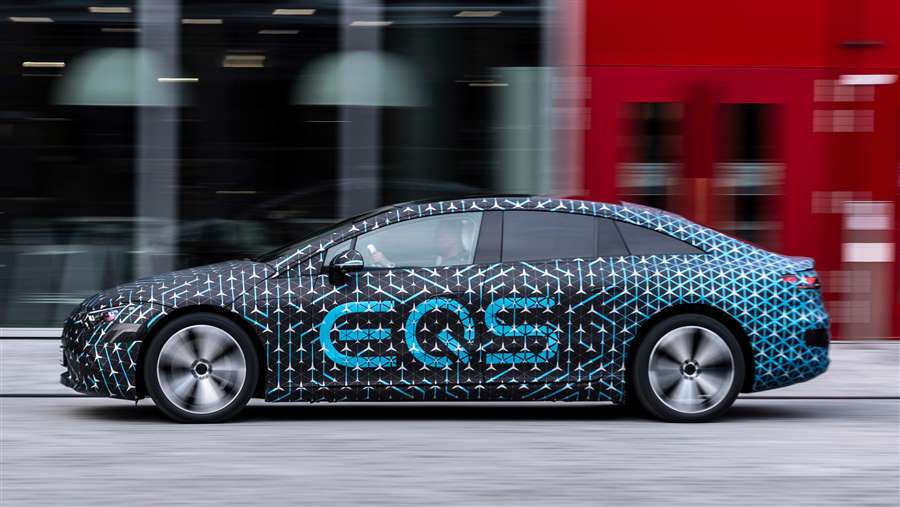
Adaptive air suspension is standard, and again, despite the weight due to the big battery (two battery sizes will be offered from launch, a 90kWh unit and a 108kWh pack, which offers up to 478 miles of range), the EQS drives with a light touch.It smooths bad surfaces and filters out the worst the road can throw at it.
However, you’re not completely decoupled from the driving experience, even if the car packs plenty of driver-assistance systems. Instead, the air suspension removes the bad elements, yet still offers a degree of connection between driver and machine, which is certainly refreshing.
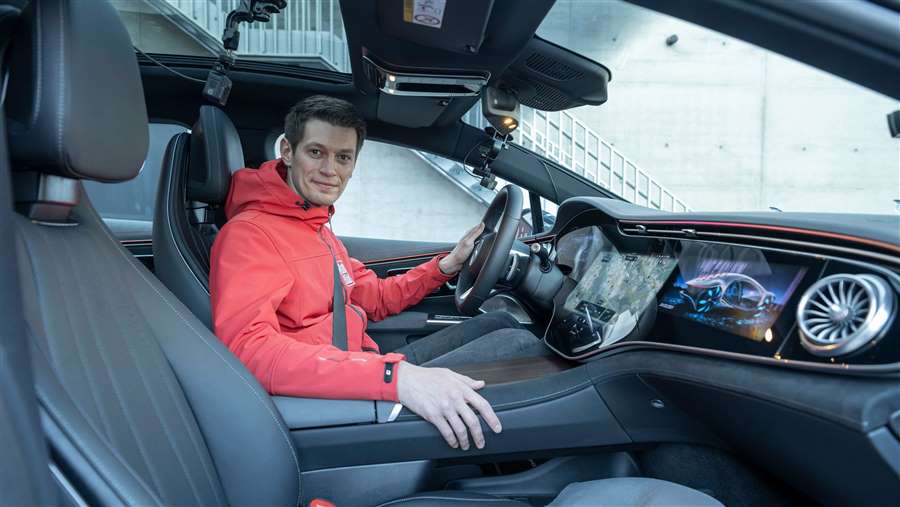
The steering is light, but for a 5.2-metre-long car the EQS is surprisingly nimble, too. Rear-axle steering is fitted to help boost agility and give a feeling that the EQS is smaller and lighter than it actually is. It definitely helps manoeuvrability in built-up areas, and out of town the Mercedes corners well for a range-topping saloon, with great traction and strong punch out of bends thanks to that huge torque being supplied to all four wheels. The brake regeneration is great too and allows for easy one-pedal driving in its strongest setting, while there’s also an adaptive auto mode.
There are some sound and ambient light programmes designed to inject a bit more emotion into the driving experience, but we’d say you don’t need them.
There are some drawbacks. Given the location of the battery in the car’s floor, you sit quite high, so headroom might be a little limited if you’re tall. From the driver’s seat you also can’t see the bonnet – although you soon get used to placing the car on the road. It’s partly due to the high dashboard that features the EQS’s party piece: the 55.5-inch curved Hyperscreen infotainment system, which is beautifully crisp and clear.
autoexpress.co.uk
Skoda has prepared a new version of the Octavia model
Skoda has prepared a new equipment package for its bestseller, so the fourth generation Octavia model will now be offered for the first time in a more dynamic edition - Sportline. It will, therefore, be a version just below the sporty Octavia RS model.
Situated between the Style trim level and the sporty Octavia RS model, the new Sportline variant brings black exterior elements, a three-spoke multifunction sports steering wheel, sports seats with integrated headrests and, perhaps best of all, the option to order with DCC dynamic chassis control.
On the outside, the Sportline Octavia differs from the others in the front splitter, as well as in the grille frame and the Skoda inscription on the tailgate, which comes in a glossy black color. The rear is also a black diffuser with chrome elements, while the hatchback version also boasts a black rear spoiler.
Standard equipment for the Octavia Sportline includes black 17-inch Pulsar alloy wheels, and metallic black 18-inch Vega wheels are also available as an option, and exclusively for Sportline 19-inch black polished Taurus alloy wheels. The front wings are decorated with Sportline badges.
In terms of engines, the Škoda Octavia Sportline is available with petrol and diesel engines, a natural gas (CNG) version, as well as plug-in hybrid and mild-hybrid technology and front-wheel drive or all-wheel drive. Output power ranges from 85 kW (115 hp) to 150 kW (204 hp). The 110 kW (150 hp) 1.5 TSI petrol can be ordered with the optional 7-speed DSG transmission and mild-hybrid technology, while the 140 kW (190 hp) 2.0 TSI comes standard with a DSG transmission and all-wheel drive.
The 2.0 TDI diesel can be ordered with 85 kW (115 hp), 110 kW (150 hp) and 147 kW (200 hp).
The Octavia iV Sportline is a 150 kW (204 hp) plug-in hybrid, while the G-TEC version on compressed natural gas (CNG) delivers 96 kW (130 hp).
In the cabin, the Octavia Sportline is inspired by the level of Style equipment and includes Piano Black decorative strips. The sports seats have integrated headrests and are equipped with specially breathable ThermoFlux upholstery. The multifunctional sports steering wheel has three arms and the Sportline mark, while the decorative sills on the front door have the inscription Octavia. In addition, the new variant of the Czech bestseller also offers well-known Simply Clever solutions, such as a USB-C port on the interior mirror.
Tested: 2022 Mitsubishi Outlander Goes from Punchline to Prime Time
With a little help from Nissan, Mitsubishi returns to relevancy with its undeniably distinct and unexpectedly engaging fourth-generation Outlander SUV.
Mitsubishi needs a hit. It's no secret that the Japanese automaker is now a minor player in the U.S. market, its product lineup lacking the star power of an Evo, or even a Montero. It doesn't help that two of its four remaining models—the Eclipse Cross and the three-row Outlander—are compact crossovers that compete in the most cutthroat segment in America. After all, there are only so many driveways to fill every year, and in 2020 alone more than 1 million of them added either a new Chevy Equinox, Honda CR-V, or Toyota RAV4. Meanwhile, the Outlander (Mitsubishi's most popular U.S. model) found just 173,674 takers from 2016 through 2020. Facing increasing competition and decreasing market share, the company could've ordered up another facelift and resigned itself to perpetual fringe-player status. Instead, it found a tag-team partner and fought for relevancy.
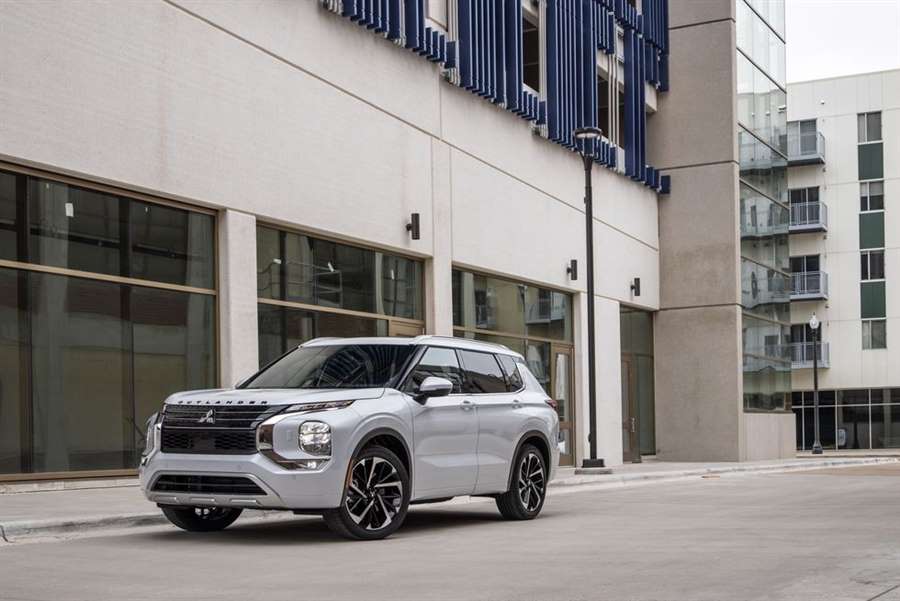
Enter the Renault-Nissan-Mitsubishi Alliance. While there’s certainly plenty of scandal and strife between Nissan and Renault, this is also Mitsubishi's redemption story. In short, the merger means Nissan developed a platform and powertrain for the all-new 2021 Rogue and then shared those fundamental pieces with Mitsubishi, which used them to create the fourth-generation 2022 Outlander. The result is a surprisingly compelling addition to the throng of compact utes jockeying for the public's attention and the press's admiration. To be clear, we're not just impressed with the new Outlander because it's better than its predecessor, which set the bar somewhere down in the Mariana Trench. We're charmed by its competent handling, handsome interior, and roster of desirable features. Its extroverted bodywork will likely have as many haters as fans, but its bold face does look better in person and some might even say it has shades of Range Rover if you look past the three-diamond emblem and squint really hard.
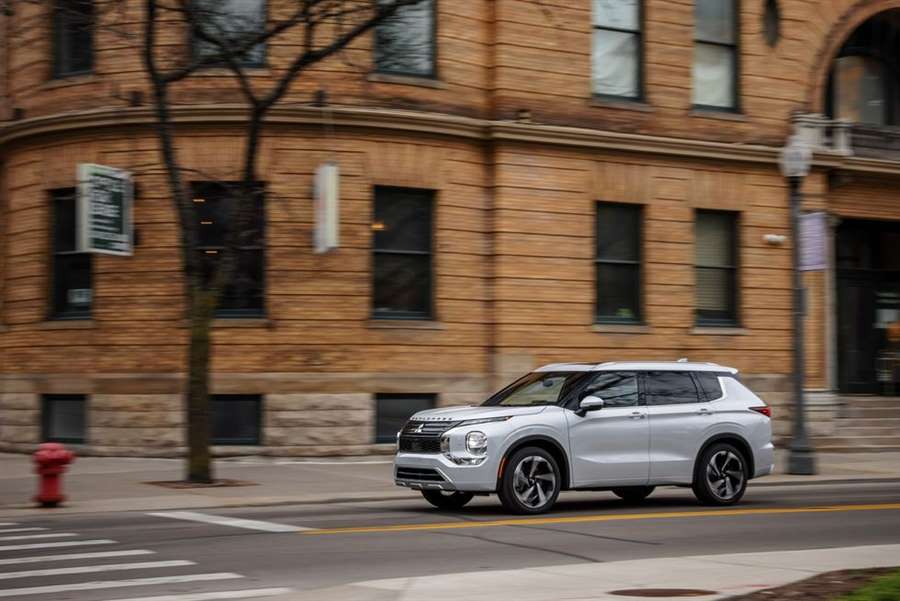
HIGHS: A cabin we like spending time in, more popular modern features, sporting intentions shine through not-so-sporting bones.
Mitsubishi calls the design inspiration I-Fu-Do-Do, which means “authentic and majestic” in Japanese. We'll just leave that right there. But we will point out that the new Outlander is one of only two compact crossovers with 20-inch wheels, which is surely to attract a size queen or two. The Volkswagen Tiguan also offers 20s and it's the only other seven-seater in this class, but the VW’s third row is limited to front-drive models. Every Outlander seats seven, but only five comfortably. Even though Mitsubishi says the rear-most seats are intended for kids only, we're confident anyone with legs won't be comfortable back there. At least passengers in the other two rows have adequate stretch-out space and enjoy more hip and legroom than before, thanks to a 3.4-inch width increase and an extra 1.4 inches between the axles. Cargo volume also grows from 33 to 34 cubic feet behind the second row and from 11 to 12 cubes behind the third row.
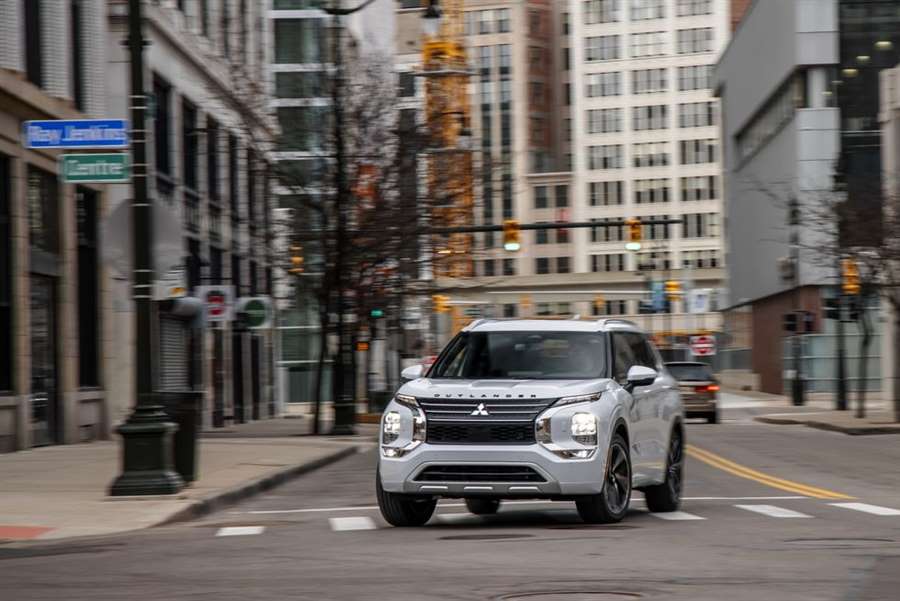
While the Outlander’s exterior is a clean break from the previous generation, its interior is an even wilder departure—not because it’s outrageously bizarre or futuristic, but because it’s genuinely nice. In the past, our most vitriolic comments were reserved for the Outlander’s prehistoric interior design and offensively cheap materials. Now, the dashboard is almost luxury-car grade in its elegant simplicity, and the hard plastics are mostly relegated to surfaces out of sight and infrequently within reach. Even base models have dual-zone climate control, knurled switchgear, and nice-feeling window switches. Stepping to a top-of-the-line SEL trim brings legitimate luxuries like leather, quilted door panels, and aluminum trim on the center console. Our Diamond White SEL example carried an as-tested price of $38,590, but that included the $2700 SEL Touring package with semi-aniline leather upholstery, a 10-speaker Bose stereo, a head-up display, and a panoramic sunroof. While we appreciated the crisp resolution and configurability of the 12.3-inch digital gauge cluster, only die-hard fans of The Price Is Right will appreciate the Big Wheel-inspired speedometer and tachometer. The 9.0-inch touchscreen infotainment system—up from the standard 8.0-incher—works flawlessly with wireless Apple CarPlay, though Android Auto users must still be plugged in.
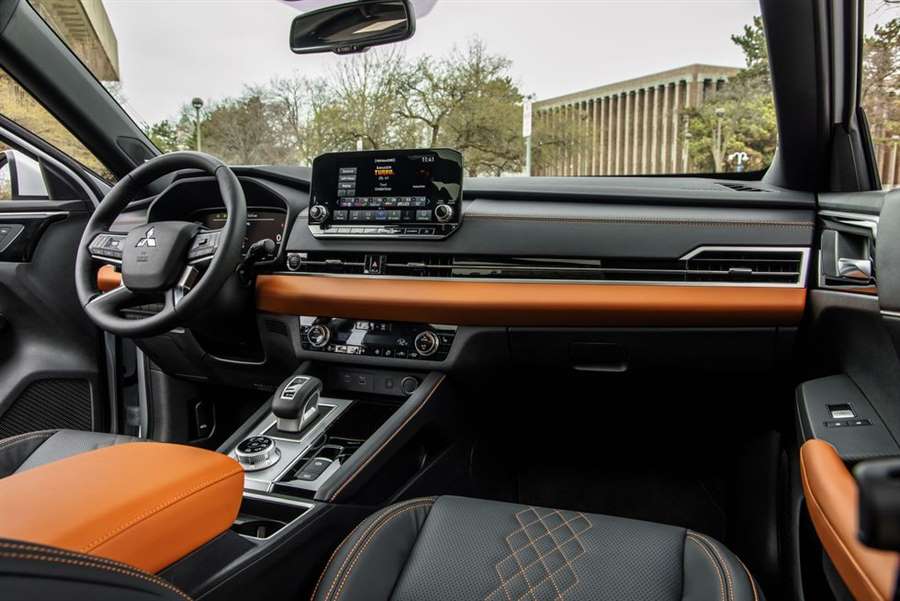
The Outlander SEL we tested was also fitted with the $1800 all-wheel-drive system and the aforementioned 20-inch wheels. They're standard on most trims and even optional on the base one and are fitted with wide-for-this-class (255 section width) Bridgestone Ecopia H/L 422 Plus all-season tires. They provide a notable 0.85 g of cornering grip and contributed to the Outlander's newfound agility. Sure, their narrower sidewalls and the SUV's lack of isolation combined to send hollow thuds up through the structure. The hood flutter at 70 mph is enough to have a passenger question whether the bonnet was actually latched. We’re not surprised that the steering offers little in terms of feedback, but the car doesn’t fall on its face if you have to hustle it around a cloverleaf to merge. It needed 172 feet to stop from 70 mph, which is respectable for the class and 8 feet shorter than a 2016 Outlander we tested. We’d feel even better about the brakes if the pedal weren’t so squishy.
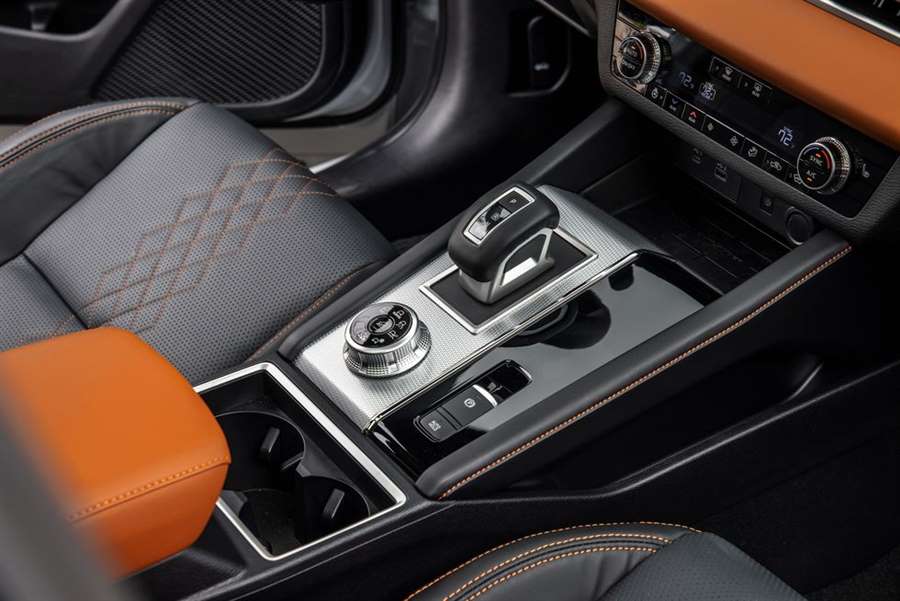
But the biggest demerit is the Outlander’s 181-hp 2.5-liter inline-four and continuously variable automatic transmission (CVT). It's the only powertrain until the plug-in-hybrid variant arrives. Thankfully, the new engine isn't quite the boat anchor that the 166-hp 2.4-liter four-pot it replaces was, but the 224-hp V-6 is no longer an option. The old four-cylinder powertrain carried the Outlander to 60 mph in 9.3 seconds. The Nissan-supplied version takes 8.2 ticks and is a half-second quicker between 50 and 70 mph (6.0 seconds flat). Both times are identical to the Rogue we tested, despite the Mitsubishi's 226-pound disadvantage. But even though the Outlander feels responsive at city speeds and can keep pace on the highway, the transmission's syrupy behavior and overall lack of urgency when merging dulls our enthusiasm. Especially when the top trim's sticker price mirrors that of a turbocharged Mazda CX-5.
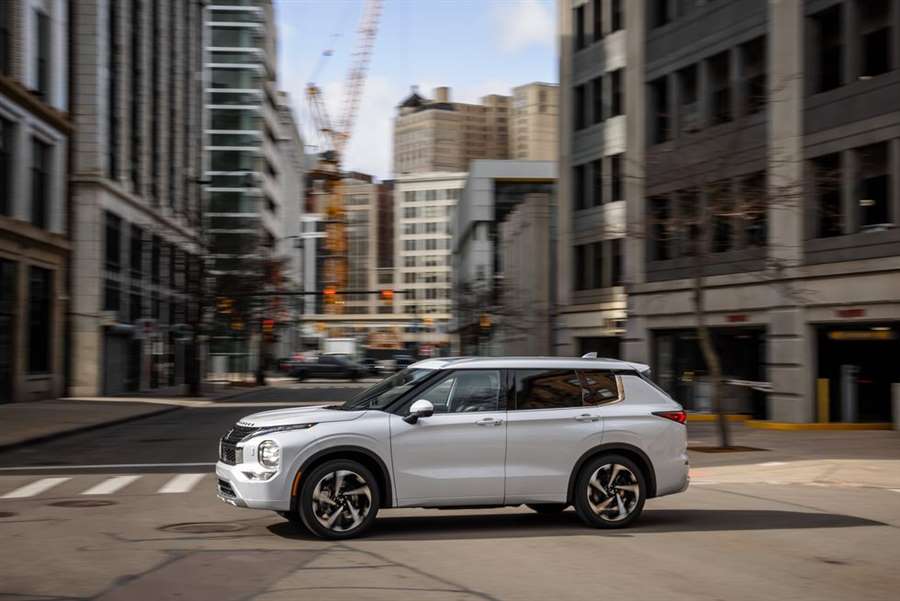
Mitsubishi’s resolutely average powertrain is probably the right call for this market. Remember the 2010 Outlander GT? It featured a V-6, an electronically controlled limited-slip front differential, a lockable center diff, magnesium column-mounted paddle shifters, an aluminum roof, and a 7.5-second 60 time. Nobody bought that one.
So, four-banger and CVT it is. Though the Outlander's CVT mimics traditional gearchanges and effectively mitigates the dreaded engine drone, it doesn't really pay off at the pump. The EPA estimates all-wheel-drive versions will earn 24 mpg city and 30 highway. That's not particularly impressive, and an equivalent and lighter Rogue is rated at 25 mpg city and 32 highway. We tested both on our 75-mph highway fuel-economy test and observed 32 mpg with the Nissan and a much lower 26 mpg with the Mitsubishi.
Even with our enthusiast-slanted gripes and its underwhelming powertrain, the 2022 Outlander finally has some style and substance to compete against today's top compact crossovers. “Spend money where people can see it” is probably a good strategy when your audience cares more about a quality interior than having a tarmac setting on the all-wheel-drive system. And compared with the Rogue, the Outlander also offers a higher towing capacity (2000 pounds versus 1350) and a longer powertrain warranty (10 years or 100,000 miles versus five or 60,000). Credit Nissan with the assist, but Mitsubishi made its own decisions and took its own chances to transform the Outlander from punchline to prime time.
Before the VW Beetle, the charismatic NSU Prinz was made in Sarajevo
The model by which NSU returned to the world of cars was a real hit of the post-war prosperity of Germany. It is about the Prince 4 who lost his kingdom after the creation of Audi. Today, this model is 60 years old, and 50 years ago its production in Sarajevo stopped, when it was inherited by VW Beetle in the Pretis factory. Complete bodies of the Prinza 1000 (then 1200) arrived in Sarajevo, and then parts such as electric wires, batteries, tires were added ... The basic version of the Sarajevo Prinza 1200 cost around 1.8 million dinars, and the average salary was 100,000, writes Jutarnji.
The first car of the manufacturer from Neckarsulm, named Prinz, dates from the end of 1957, but the differences between it and the version that arrived four years later and managed to go beyond Germany are huge.
This is primarily due to the design, because the fourth edition, thanks to pencils by German designer Claus Luthe, took on the then modern, American style, inspired by the 1959 Chevrolet Corvair with clean straight lines, two large circular headlights, generous glass surfaces and a roof that extends slightly above the upper edge of the rear window.
The dimensions of the Prinz 4 are minimalist by today’s standards (length 344 cm, width 149, height 136 and wheelbase 204 cm), but the interior provided a solid amount of space.
A concrete link to the three previous releases was a two-cylinder air-cooled engine based on the experience with motorcycles (NSU was the largest motorcycle manufacturer in the world during the 50s). Located at the rear, with a volume of 598 cc, it developed 30 "horses", and the propulsion engine built into the engine block, which also works as a generator, was one of the original solutions.
Prinz 4 was one of the discoveries of the fair in Frankfurt in 1961, and the following year the production was increased to 300 copies per day. Demand grew thanks to the favorable price, low costs and solid driving characteristics, and already in June 1962, the one hundred thousandth Prinz 4 was produced.
Initially, in addition to the basic model, a richer equipped model with the S mark was offered, and in 1965 a new level of equipment with the L mark was introduced. For example, in 1968, Italy sold almost six times more than Germany.
Immediately after the presentation of Prinz 4, the Typ 43 project was launched, with which the NSU was to step into a higher segment. Since the price was in the foreground, the development started using the same mechanical basis. The only concrete difference on the body was in the longer wheelbase, while the drive was aimed at a more powerful version with four cylinders.
The first solution was created by merging two two-cylinder engines used by Prinz 4. Development took time, and by 1964 the project changed its name to Typ 67, and when it came off the track it became Prinz 1000, which later became versions of TT, TTS and 1200.
Prinz was produced in several countries in South America, Ireland, but also in Sarajevo's Pretis (Tito Sarajevo Company). The company dealt with weapons and, like the Kragujevac Flag, expanded production to motor vehicles. The contract with NSU began with a Maxi motorcycle and a Prima scooter, which were assembled in Vogošća, and the program was extended to cars in 1965.
Complete bodies of Prinza 1000 (then 1200) arrived in Sarajevo, and then parts such as electric wires, batteries, tires were added in Pretis… The basic version of Sarajevo's Prinza 1200 cost around 1.8 million dinars, and the average salary was 100,000. The production, during which about 15,000 copies were made, lasted until 1971, after which new plants were created in Vogošća, in which Volkswagen Bugs were assembled a year later.
The career of Prince 4 was long and successful. In 12 years, it reached the number of almost 600,000 units on the market, while the Prinz 1000 was more successful on the race tracks, especially the TT and TTS versions, than on the market (200,000 in 8 years).
Yet after Volkswagen took over the NSU in 1969 and merged it with the Auto-Union from which Audi emerged, the days for Prinz were numbered. The new owners did not invest in the modernization of the car, which was one of the bestsellers in Germany in the 60's, but also a real competitor to Bubi. Production of the Prinza 4 stopped in July 1973, and its place was taken by the Audi 50.

